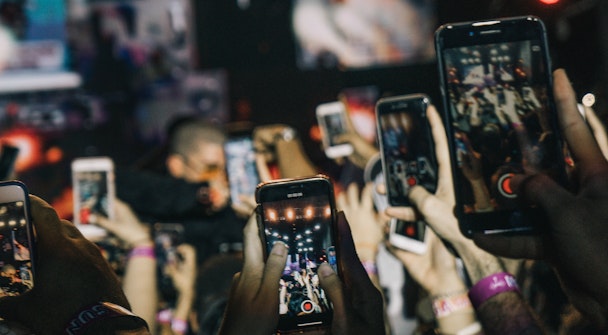2022: the year micro-influencer marketing meets big data
With companies looking to build meaningful relationships with longer-term customers before and after transaction, micro-influencers look set to become a permanent fixture of their communications strategies long into 2022 and beyond. Ryan Dean, head of PR strategy at Jaywing, is seeing big brands seek to work with micro-influencers in the name of effectiveness.

Jaywing on the rise of the micro-influencer and how brands can utilize this audience group
With a greater focus than ever on customer loyalty, effectiveness and ROI, how can brands leverage data to better plan, execute and – most importantly – measure the success of their micro-influencer campaigns?
The rise of the micro-influencer
Micro-influencers, those operating with 100,000 followers or fewer, have been proven to drive a greater ROI than their macro counterparts, helping to drive authentic messages to loyal and engaged fanbases. The growing popularity of micro-influencers in the wake of the pandemic is plain to see; searches around the topic increased 105% (according to Ahrefs Keyword Explorer) from 2019 to 2021 as brands looked to incorporate them into their marketing strategy.
Driven by socio-economic factors, the lockdowns of 2020 and 2021 led to an explosion of new, versatile micro-influencers entering the marketing space. Smaller influencers are prized for their flexibility; they can easily engage their audiences around multiple topics and products, and aren’t expected to stay in their lane when it comes to a specific niche or sector. Likewise, 2020 also gave rise to the ‘multi-channel’ influencer; content creators moved from longer-term, well-established platforms including YouTube and Instagram to emerging channels such as TikTok, simultaneously growing and diversifying their follower base.
Facing a tightening marketing budget and an uncertain future, micro-influencers allowed brands to maintain a genuine connection with audiences and cultivate customer loyalty. More practically, at a time when producing content – from static imagery to video – became increasingly difficult, smaller influencers proved themselves as reliable production houses capable of shaping assets around key messages.
As a result, it’s no surprise that we are seeing more brands are looking to micro-influencers to augment their PR and social media marketing strategies, with figures indicating that smaller influencers will make up 91% of the market share of the sector moving into 2022. With access to better tools and data paving the way for increased personalization and more accurate measurement, it’s the ideal time for brands to enhance their influencer marketing strategy.
Personalization and planning
Increased access to customer data means that marketing teams can effectively personalize channels and messaging better than ever before – an approach that can greatly benefit influencer marketing campaigns. In addition to in-platform tools such as Facebook’s Audience Insights, brand strategists can leverage platforms such as YouGov to profile audiences in terms of their content consumption; what channels they most active on, what type of content they typically engage with and what messages resonate with them are all valuable insights that can underpin and enhance influencer marketing activity.
This insight can be used in conjunction with platforms such as Whisper, Jaywing’s proprietary social media listening tool. By plugging directly into social channels and using complex 360 data modeling to identify trending topics, Whisper can help brands understand the conversations they need to be part of to engage with their audiences. Furthermore, the platform can also identify connections between potential micro-influencers and their fanbases, helping marketers to build and engage with the right communities that are likely to respond to their brand and messaging.
Performance and measurement
Moving forward, brands need to find ways of measuring activity that align with their wider commercial goals. Currently, existing solutions such as in-platform metrics can give marketers a picture of how well engaged the content was, with metrics such as reach, comments and shares indicating the success (or lack thereof) of a particular campaign. From a sales perspective, affiliate marketing codes can provide a direct view of the conversions generated by a particular partnership, though this doesn’t necessarily give an accurate view of the ‘value’ of influencer marketing.
For brands to properly understand the impact of working with influencers – big and small – in 2022, they need to embrace better measurement and attribution. At its core, influencer marketing is best used as a means of generating reach among an engaged, relevant audience base, and its impact should be measured as such.
The big questions here are: can influencer marketing prompt an uptake in brand awareness, and drive positive sentiment around the product or campaign? Furthermore, how can we measure this across channels? Can we correlate a relationship between influencer marketing, for example, and increases in brand search? Most importantly, how does influencer marketing enhance the relationships brands have with their customers – what does their average order value look like, and how loyal are they?
Continued investment in micro-influencer activity as part of a wider channel mix in 2022, incorporating data into every element of the campaign process from planning through to measurement, will not only allow brands to accurately target the most relevant customers, but also answer crucial questions about the impact of this activity – not just on short-term sales, but also against long-term business objectives.
Content by The Drum Network member:

Jaywing
At Jaywing, we’ve made it our mission to help clients establish concrete foundations in a world of shifting sands. As a data-powered integrated agency, we bring...
Find out more
